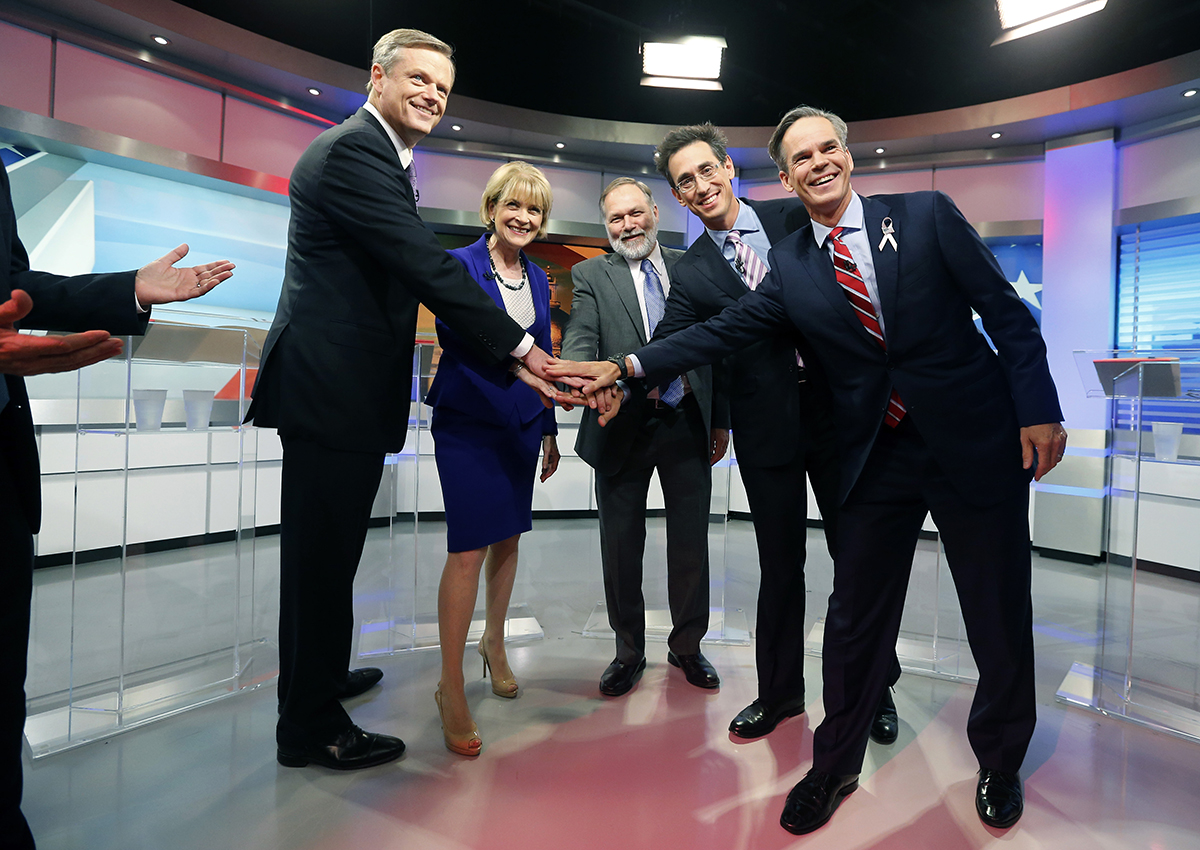A Rule of Thumb for the Governor’s Race, Three Weeks Out

Photo via Associated Press
Four years ago today, Suffolk University released a poll of the Massachusetts gubernatorial race, showing Deval Patrick leading by a healthy 7 percentage points over Charlie Baker; this was consistent with polls taken a little earlier or later in the month and with the final margin of about 6 1/2 points.
Four years ago tomorrow, in response to people like me insisting that Patrick was ahead, the Baker campaign put out its own internal poll, conducted by Neil Newhouse’s Public Opinion Strategies (POS, or “piece of shit” polls, as I call them). That poll had Baker 7 points ahead.
Putting that nonsense aside, the lesson is that these big statewide races don’t usually shift significantly in the final three weeks. In 2006, three mid-October polls, averaged out, put Patrick’s lead over Kerry Healey at 17 points; he won by 21. (A week earlier, Suffolk had it on the nose at 21.) That may seem counterintuitive, since so many people only start paying attention in the final weeks, and those weeks are filled with key debates, ads, and media coverage. But there it is.
In mid-October polling two years ago, Elizabeth Warren led Scott Brown by about 4 or 5 points; she won by 7 1/2. That’s a bit of a shift; I would suggest that Senate races are a bit more malleable at the end here, as big national issues and themes can come into play. For example, in 2010, Scott Brown benefited late from growing concerns about Obama and the national Democrats; he then suffered late in 2012 from growing concerns that national Republicans were insane and/or misogynist.
The general accuracy of gubernatorial polls in recent elections also casts doubt on a big Democratic field operation advantage—or more accurately, suggests that the advantage has now been baked into the polling assumptions. There is also some evidence to suggest a different conclusion: that these races have shifted a little toward the Republican in the last couple of weeks, and then the Democrat has over-performed a little due to the turnout edge, ending up back at the original three-week-out lead.
It also suggests, perhaps, that we shouldn’t be too worried about implementing early voting. One of the big concerns—legitimately—about early voting is that early voters could miss important actions or information that comes out in the final days that could affect their vote. For most people, it seems the direction of their vote doesn’t really change as much as they might think. They tend to interpret late developments to the benefit or fault of whichever side they already favor or oppose. (That’s part of what I’ve dubbed the “replay effect,” where people tend to view objective visual evidence of close sports plays in the favor of their preferred team.)
I will, however, point out that if you go back to 2002, it does seem that Shannon O’Brien was leading very slightly in polls, and of course ended up losing by about 5 points to Mitt Romney. In that case, it does seem like late campaign action, including debates and ads, contributed to a shift late in a Massachusetts gubernatorial race—although it’s hard to tell because publicly available polling was very scarce.
What does all this mean for this year’s contest? I don’t know. It seems as though Coakley might have a very slight lead, after the race was polling as a dead heat a week earlier. That’s probably the predictable result of pre-Coakley (and anti-Baker) advertising finally joining the fray, but it might (might, might) also hint at a pro-Coakley shift coming from the dust-up over the Super PAC ad blaming her for DCF problems.
We should have some new polling this week to give us a better sense of where we stand three weeks out from the election. And, if recent history is a guide, it should give us a better sense of where we’ll stand on election night. If you trust recent history as a guide.


